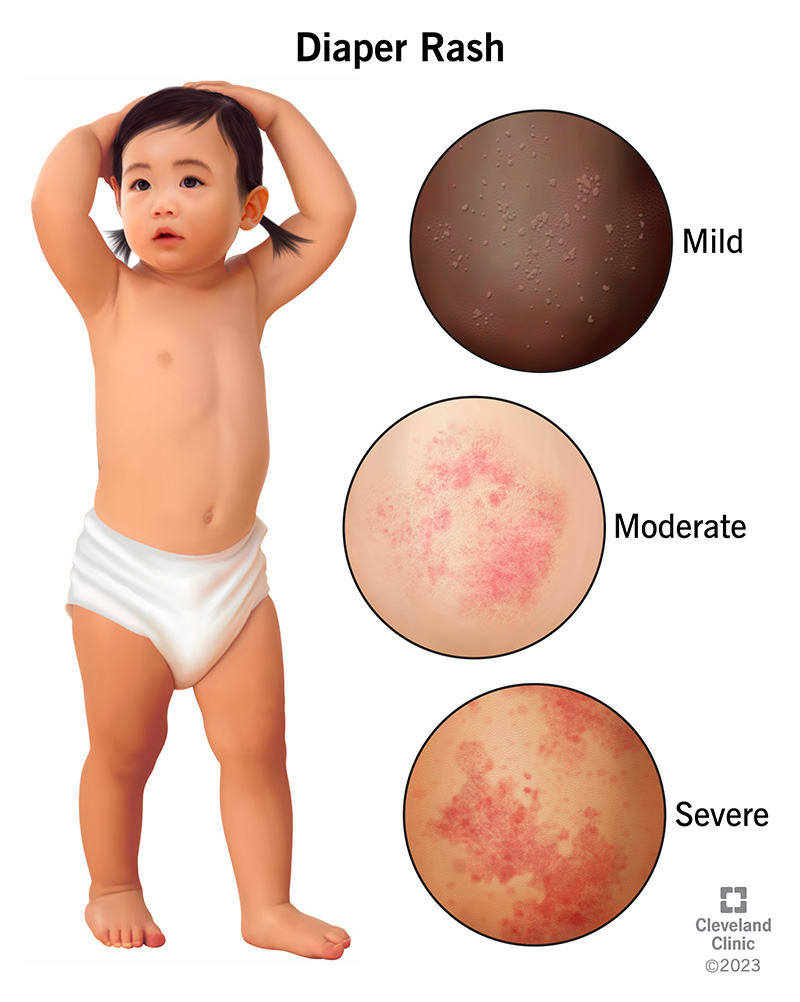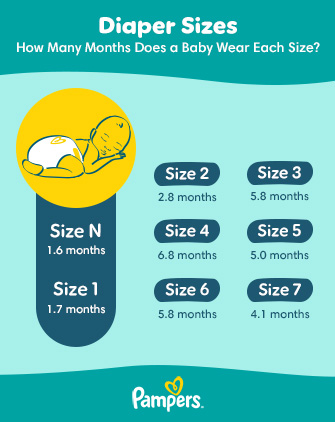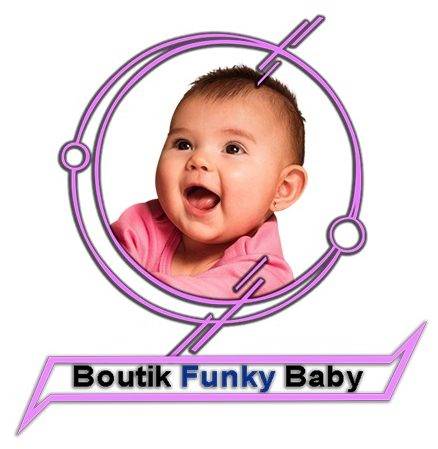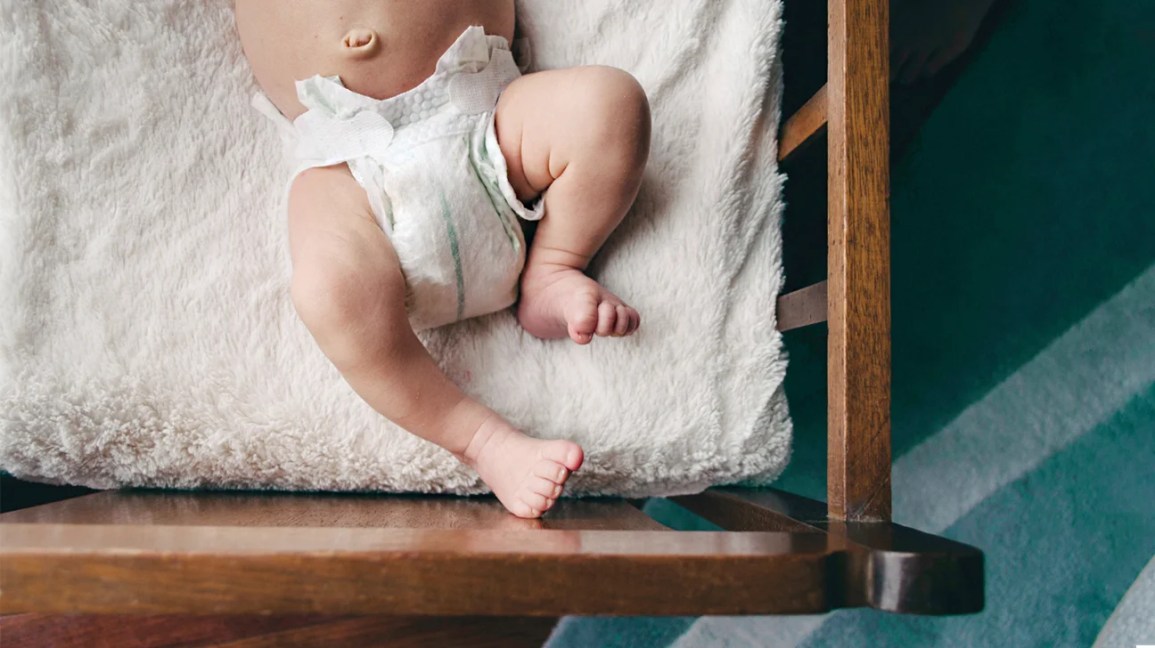Babies typically stay in diapers until they are 2 to 3 years old. Potty training usually begins around 18 to 24 months.
Babies rely on diapers from birth for their hygiene needs. Parents often start potty training when their child shows readiness signs. These signs can include staying dry for longer periods, showing interest in the toilet, or communicating the need to go.
Each child is unique, so the age for transitioning out of diapers can vary. Some children may be ready sooner, while others may take a bit longer. It’s crucial for parents to be patient and support their child’s developmental pace. Consistency and positive reinforcement during potty training can make the process smoother for both the child and parents.
Introduction To Diaper Duration
Understanding diaper duration helps new parents prepare. Babies go through different stages of growth. Each stage influences how long they need diapers. This guide will provide insights into these stages.
Importance For New Parents
New parents often feel overwhelmed. Knowing the typical diaper duration can ease worries. It helps in planning and budgeting for your baby’s needs. Awareness also ensures better hygiene and comfort for your baby.
Being informed helps in choosing the right diaper size. It avoids unnecessary discomfort. Proper planning reduces stress. It also makes the parenting journey smoother.
Overview Of Stages
| Stage | Age Range | Diaper Changes per Day |
|---|---|---|
| Newborn | 0-3 months | 10-12 |
| Infant | 3-12 months | 8-10 |
| Toddler | 1-3 years | 6-8 |
Babies start with frequent diaper changes. Newborns need about 10-12 changes daily. As they grow, the frequency decreases.
- Newborns (0-3 months): Newborns have tiny bladders. They require frequent changes.
- Infants (3-12 months): Infants need 8-10 changes daily. They start sleeping longer.
- Toddlers (1-3 years): Toddlers need about 6-8 changes. They begin potty training.
Potty training typically starts around 2-3 years. Each child is different. Some may take longer to transition.

Credit: www.healthline.com
Newborn Phase
The newborn phase is exciting and challenging for new parents. During this period, understanding your baby’s diaper needs is crucial. Proper diapering ensures comfort and hygiene for your newborn.
Frequency Of Changes
Newborns need frequent diaper changes. Expect to change diapers every 2-3 hours. This amounts to around 10-12 diapers daily.
| Age | Diapers per Day |
|---|---|
| 0-1 Month | 10-12 |
| 1-3 Months | 8-10 |
Frequent changes prevent diaper rash and discomfort. Keep a close eye on your baby’s cues.
Signs For Size Up
Babies grow quickly, so knowing when to size up is important. Look for these signs:
- Red marks on the baby’s skin
- Frequent leaks or blowouts
- Struggling to fasten the diaper
Red marks mean the diaper is too tight. Leaks or blowouts indicate the diaper is too small. If fastening the diaper is difficult, it’s time for a bigger size.
Ensuring the right size keeps your baby comfortable and dry.
Infant Stage
The infant stage is a crucial period in a baby’s life. During this phase, babies grow rapidly and require constant diaper changes. Understanding the different aspects of diapering during the infant stage can help parents navigate this important time with ease.
Growth Patterns
Babies grow quickly in their first year. Their diaper needs can change just as fast. Infants typically need diapers every few hours. This is due to frequent urination and bowel movements.
Newborns can use up to 10 diapers a day. By the time they are six months old, the number may decrease to around 6-8 diapers daily. As babies grow, their bladder capacity increases, reducing the frequency of diaper changes.
Diaper Types
There are several types of diapers available for infants. Choosing the right type is important for your baby’s comfort and skin health.
- Disposable Diapers: These are convenient and easy to use. They are great for busy parents.
- Cloth Diapers: These are reusable and environmentally friendly. They require more effort to clean and maintain.
- Biodegradable Diapers: These are a hybrid between disposable and cloth diapers. They are eco-friendly and easy to use.
Parents often choose a combination of these types. This allows them to balance convenience and environmental impact.
Toddler Transition
The transition from baby to toddler is full of changes. One of the biggest milestones is moving from diapers to using the potty. This phase, known as the Toddler Transition, can be exciting but also challenging for both parents and little ones. Understanding the signs of potty training readiness and the common challenges can make this journey smoother.
Potty Training Readiness
Recognizing when your toddler is ready for potty training is crucial. Here are some signs your child may be ready:
- Stays dry for at least two hours.
- Shows interest in the bathroom.
- Can follow simple instructions.
- Dislikes wearing dirty diapers.
- Can pull pants up and down.
Each child is unique, and the right time varies. Some children may show readiness around 18 months, while others may take longer. Patience is key during this period.
Common Challenges
Potty training comes with its set of challenges. Here are some common issues parents face:
- Accidents: Expect some accidents along the way. Keep a positive attitude.
- Fear of the potty: Some toddlers may be scared. Introduce the potty gradually.
- Regression: Changes like a new sibling can cause setbacks. Stay supportive.
- Nighttime training: Staying dry at night takes longer. Use nighttime diapers initially.
Understanding these challenges helps in preparing better strategies. Consistency and encouragement make a big difference.
Nighttime Diapering
Nighttime diapering can be challenging for new parents. Babies often need extra care during the night to stay dry and comfortable. Understanding best practices and leak prevention can help ensure a restful night for both baby and parents.
Best Practices
Follow these best practices for nighttime diapering:
- Choose high-absorbency diapers: Opt for diapers designed for nighttime use.
- Check diaper size: Ensure the diaper fits well to avoid leaks.
- Use diaper cream: Apply cream to prevent rashes.
- Limit fluids before bed: Reduce liquid intake before bedtime.
Leak Prevention
Preventing leaks is crucial for a baby’s comfort and parent’s peace of mind:
- Double diapering: Use an extra diaper for added protection.
- Proper positioning: Make sure the diaper is snug around the legs and waist.
- Use diaper liners: These can absorb extra moisture and prevent leaks.
- Check frequently: Change the diaper immediately if it’s wet or soiled.
| Diaper Type | Absorbency Level |
|---|---|
| Standard | Moderate |
| Nighttime | High |
| Cloth | Variable |

Credit: my.clevelandclinic.org
Diaper Rash Management
Dealing with diaper rash can be stressful for both parents and babies. Understanding the causes and effective treatments can make a huge difference. Learn how to manage and prevent diaper rash to keep your baby comfortable.
Causes And Prevention
Diaper rash occurs due to prolonged exposure to wetness and irritants. Wet diapers, chafing, and sensitive skin are common causes. Yeast infections can also contribute to rash formation.
Preventing diaper rash involves maintaining good hygiene. Change diapers frequently to avoid prolonged wetness. Use gentle wipes and mild soap. Allow your baby’s skin to breathe by giving diaper-free time.
| Cause | Prevention |
|---|---|
| Wet Diapers | Change frequently |
| Chafing | Ensure proper fit |
| Sensitive Skin | Use gentle products |
| Yeast Infections | Keep area dry |
Effective Treatments
Treating diaper rash involves keeping the affected area clean and dry. Use a thick layer of barrier cream like zinc oxide. This cream protects the skin from further irritation.
Hydrocortisone cream can help with severe inflammation. Always consult a pediatrician before using medicated creams. Avoid using talcum powder as it can irritate the lungs.
- Clean the area with warm water and mild soap.
- Pat dry with a soft cloth.
- Apply a thick layer of zinc oxide cream.
- Give your baby diaper-free time.
Natural remedies like coconut oil and aloe vera can also soothe the skin. Always do a patch test first to ensure no allergic reactions.
Eco-friendly Options
Choosing the right diaper for your baby involves several factors. One of the most important is the environmental impact. Eco-friendly options can reduce waste and promote sustainability. This section explores the differences between cloth and disposable diapers and highlights some sustainable brands.
Cloth Vs. Disposable
Parents often debate between cloth and disposable diapers. Both have pros and cons.
| Cloth Diapers | Disposable Diapers |
|---|---|
|
|
Sustainable Brands
Several brands focus on sustainability in their diaper production. These brands offer more eco-friendly options for parents who care about the environment.
- Bambo Nature: These diapers are biodegradable. They are free from harmful chemicals.
- Eco by Naty: Made from natural materials. These diapers are compostable and skin-friendly.
- Seventh Generation: These diapers use sustainable practices. They are free from fragrances and chlorine.
Choosing eco-friendly diapers can make a big difference. It helps protect the planet for future generations.
Financial Considerations
Raising a baby can be expensive, especially with diaper costs. Understanding the financial impact can help you budget better. Here, we explore the cost of diapers and budget-friendly tips.
Cost Of Diapers
The cost of diapers can add up quickly. On average, a baby uses 6-10 diapers per day. This means around 3,000 diapers in the first year.
| Brand | Cost per Diaper | Monthly Cost | Yearly Cost |
|---|---|---|---|
| Generic | $0.15 | $45 | $540 |
| Mid-Range | $0.25 | $75 | $900 |
| Premium | $0.35 | $105 | $1260 |
These costs can vary based on brand and baby’s needs. Always consider bulk buying for savings.
Budget-friendly Tips
Finding ways to save on diapers can ease financial stress. Here are some tips:
- Buy in Bulk: Bulk purchases often come with discounts.
- Use Coupons: Look for coupons online or in stores.
- Subscribe and Save: Many retailers offer discounts for subscription services.
- Consider Cloth Diapers: They can be reused and save money long term.
- Shop Sales: Keep an eye out for sales and stock up.
Using these tips can help reduce the overall cost of diapers. Planning ahead and being resourceful makes a big difference.
When To Seek Advice
Understanding the right time to seek advice on diapering can be crucial. Babies grow at different rates. Sometimes, you might need expert guidance. Knowing when to ask for help can save time and stress. Here are some key points to consider.
Consulting Pediatricians
Your baby’s pediatrician is a valuable resource. They can provide insights based on your baby’s health. If your baby has frequent diaper rashes, consult the pediatrician. Persistent diaper leaks can also be a sign to seek advice. Unusual bowel movements may need medical attention. Discuss any concerns with the doctor during regular check-ups.
Community Support
Joining parent groups can be beneficial. Experienced parents can share valuable tips. Online forums offer a platform for advice and support. Local parenting classes can also be helpful. These communities can provide practical solutions. Seek advice if you face diapering challenges.
| Situation | When to Seek Advice |
|---|---|
| Frequent Diaper Rashes | Consult Pediatrician |
| Persistent Diaper Leaks | Consult Pediatrician |
| Unusual Bowel Movements | Consult Pediatrician |
| Diapering Challenges | Seek Community Support |
Key Points to Remember:
- Pediatricians can help with health-related concerns.
- Community support offers practical advice.
- Regular check-ups are important for baby’s health.

Credit: www.pampers.com
Frequently Asked Questions
How Long Do Babies Wear Diapers?
Babies typically wear diapers for 2 to 3 years. This varies based on individual development and potty training readiness.
When Do Babies Stop Using Diapers?
Most babies stop using diapers between 2 to 3 years. Some may take longer, depending on their development and readiness.
How Often Should You Change A Baby’s Diaper?
Newborns need diaper changes every 2-3 hours. As they grow, changes can reduce to every 3-4 hours.
What Are Signs A Baby Is Ready For Potty Training?
Signs include staying dry for longer periods, showing interest in the toilet, and indicating when they need to go.
Conclusion
Knowing how long your baby will stay in diapers helps you plan better. Every child is different, so timelines vary. Stay patient and supportive during this transition. Remember, this is a significant milestone in your baby’s growth. Celebrate each step towards potty training success!

I’m a USA-based baby guide writer and blogger with extensive experience in parenting tips, baby care, and product reviews. Passionate about helping new parents, I provide trusted advice and insightful articles to make parenting a joyful journey. Follow my blog for expert guidance and support.

